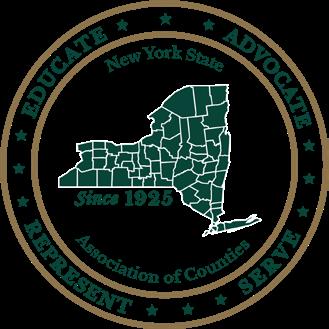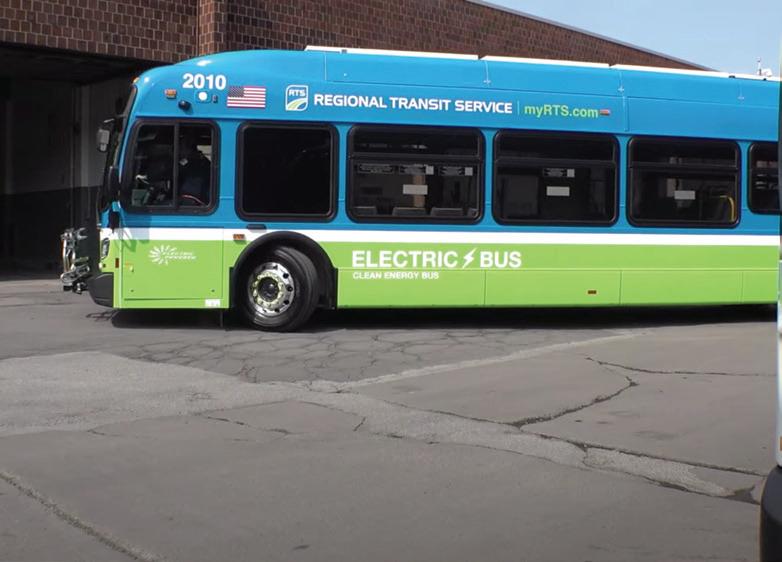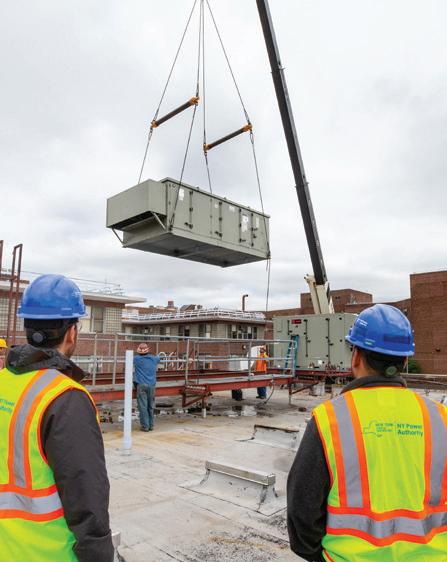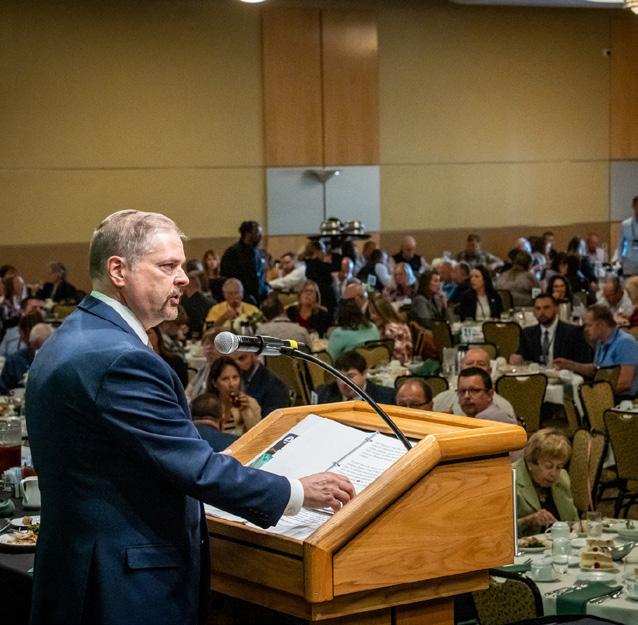NYSAC News
NEW YORK STATE ASSOCIATION OF COUNTIES
The New Federalism
Artificial Intelligence in Local Government

9/11 Survivor Account: Enduring Lessons for Public Service Counties Chart Course for 2026




9/11 Survivor Account: Enduring Lessons for Public Service Counties Chart Course for 2026



Effective budgeting isn’t just compliance, it’s leadership.
At Bonadio, we help towns, villages, cities and counties navigate NYS’s budgeting process with confidence, accuracy, and transparency.
Serving 300+ governments annually, we combine deep municipal knowledge with cutting-edge AI tools to make budgeting smarter, faster, and more transparent.

Our Expertise Includes:
• Statutory deadline compliance
• Accurate 2% tax cap calculations
• Long-term financial strategy
• AI-powered forecasting & analysis
• Audit & OSC review readiness
Let’s Build a Better Budget Together. Contact Bonadio today to schedule a complimentary consultation.
Timothy Doyle, CPA | tdoyle@bonadio.com | 212.600.2854



NYMIR is a licensed, regulated insurer owned by its policyholders — over 1,000 municipalities across New York State.
Since 1993, we have built a strong, fiscally responsible program, providing property and casualty insurance to counties, cities, towns and villages, both big and small.


Customer service, knowledge of municipal operations, risk management and aggressive claims defense are the cornerstones of NYMIR — not shareholder returns or corporate earnings targets.
One of NYMIR’s strengths is reliability. We will not waver from our dedication to supporting our members with the best coverages, claims handling and risk management services possible.
Our members rely on us for three simple reasons: our conscientious experts are always there for them; we have maintained stability in a volatile insurance market; and we have consistently provided high quality insurance and responsive services that meet the unique needs of New York State’s local governments.
Check out our website to see why we’re the leading insurance program for local governments in New York.















Philip R. Church Oswego County President
Dr. Kevin Watkins Cattaraugus County President Elect
Hon. Margaret M. Kennedy Otsego County First Vice President
Hon. Steven M. Neuhaus
Orange County Second Vice President
Hon. Benjamin Boykin II
Westchester County
Immediate Past President
Hon. Luis A. Alvarez, Sullivan County
Hon. Shawna Black, Tompkins County
Mr. Christopher DeBolt, Ontario County
Ms. Ruth A. Doyle, St. Lawrence County
Hon. Jeffrey Elder, Niagara County
Hon. J. Ryan McMahon II Onondaga County
Mr. Jonas Neri
New York City Office of the Mayor
Hon. Edward Romaine, Suffolk County
Hon. Susan J. Serino, Dutchess County
Hon. Paul M. Wendel Jr. Chautauqua County
Hon. A. Douglas Berwanger, Wyoming County
Hon. Daniel P. McCoy, Albany County
As we bring NYSAC’s remarkable 100th anniversary milestone to a close, it’s an honor to lead this association as we start a new chapter of representing our state’s 57 counties and the City of New York, with its five boroughs.
We have come a long way as an association over the past 100 years, but we continue to do many of the same things we did in 1925. We are still focused on training and education, and we have become powerful advocates for counties and local taxpayers. We bring the concerns of our residents to the statehouse of Albany and our nation's capital in Washington. We also provide direct support to counties looking for data and research on local laws, policies and finances.
This year, as your president, I am proud to launch the “NY Counties Lead” campaign—a year-long initiative to spotlight the pivotal role counties play in public service and public policy across New York State.
From championing vital issues in Washington and Albany to delivering essential services in every community, counties have long been at the forefront of building a stronger, more resilient state.
Over our century as an association, county governments have become vastly more complex. We deliver a broader array of services, we fund more programs, and we interact with more levels and departments of government.
We manage the electoral process. We arrest, jail, prosecute, and defend accused criminals. We record, archive, and maintain every real estate transaction, court proceeding, birth, and death that takes place within our boundaries.
We are the first responders, the emergency managers, the public health officials, and the restaurant inspectors.
We make sure that a gallon of fuel and a pound of turkey are accurate at our gas stations and delis.
We plow and pave roads, maintain bridges, and dig culverts and county roads from Suffolk to St. Lawrence counties. We handle solid waste, sewer systems, and water systems from Saratoga to Chautauqua.
We ensure the safety of every at-risk child, and we provide social services to those who cannot support themselves. We provide addiction and mental health services to residents who need them.
These are just some of the ways our county members serve New Yorkers all across our state. And these are the issues that NYSAC tracks and advocates for in Washington, Albany, and across our state.
Our dedicated county officials continue to drive progress in public health, infrastructure, safety, and economic development. Your tireless efforts and steadfast commitment make your communities stronger each day, and it is this collective strength that empowers NYSAC to be an effective voice throughout New York.
As we begin NYSAC’s next chapter with the NY Counties Lead campaign, I invite all members to reaffirm their commitment to collaboration, innovation, and service. The unity and active participation of our county officials pave the way for a thriving future. Thank you for your loyalty to NYSAC and for leading the way in your communities as we embark, together, on the next hundred years of public service at the county level.

Philip Church NYSAC President







(partial listing)
Stephen J. Acquario, Esq. Executive Director
Karen Catalfamo Office/Financial Manager
Patrick Cummings, Esq. Counsel
Patricia Gettings Assistant to the Director
Mark LaVigne Deputy Director
Dave Lucas Director of Finance & Intergovernmental Affairs
Juanita Munguia Business Development Manager
Megan Novak Legislative Coordinator
Tom Oldfather Communications Manager
Kate Pierce-Nimz Multimedia Specialist
Alexandra Regan Legislative Director
Jeanette Stanziano Director of Education & Training
Chancey Young Member Information Manager
Throughout my 20+ years at NYSAC, I have always viewed our association’s role as assisting the counties as they continue to evolve towards modern, efficient, and dynamic regional governments. We have done this for 100 years, and I expect that as an association, we will do it for the next 100 years.
I want to take this opportunity to thank the Niagara County Legislature, Chairwoman Rebecca Wydysh, and the entire team in the county for their hospitality and generosity in welcoming NYSAC members as we celebrated our Centennial Fall Seminar in the picturesque Niagara Falls. It was a tremendous conference, and we appreciate all of the contributions that our host county made to create a wonderful experience.
Our purpose comes with our position, and we bring that purpose to our jobs each and every day. NYSAC and its membership, the 62 counties of New York, continue to be the laboratories of democracy, fostering excellence in county government, implementing efficiencies wherever possible, reforming policies that need to be reformed, and helping to make our communities better than when we started.
For the past 100 years, NYSAC has represented the interests of New York’s counties at all levels of government. We strive to inform and educate our members, as well as our federal, state and local colleagues, on matters germane to county government.

While it is important to remember our past efforts, like we did throughout this centennial year, we must also examine the future, and the role counties can play in that future. There will always be challenges, and we face these today, but these challenges present opportunities.
County governments, and the programs and services they provide, are essential to building a strong and healthy future for New York State. That future is not shaped solely in Albany—it is forged in our counties, our towns, our cities, and our villages. As local leaders, we are ready to work hand-in-hand with our partners at the state and federal levels to create policies and investments that strengthen every community.
Your association staff is committed to fostering the partnerships that connect every level of government. By working together—counties, the state, and our federal partners—we can turn shared challenges into opportunities and ensure that New York remains resilient, prosperous, and united. We look forward to advancing this work with you in the months ahead, as we build a future that reflects the strength, innovation, and determination of counties across our state.


NYSAC’s mission is to foster excellence in county government and unite the voice of New York’s county leaders.
President Philip Church
Publisher
Stephen J. Acquario
Managing Editor Mark F. LaVigne
Editor Tom Oldfather
Designer Kate Pierce-Nimz
Advertising Staff Juanita Munguia
Advertise with NYSAC
Contact NYSAC Business Development Manager Juanita Munguia at 518-465-1473 or jmunguia@nysac.org
Published three times a year by the New York State Association of Counties (NYSAC), the NYSAC News is the official publication of NYSAC, a non-profit municipal association serving the 57 counties of New York State and the City of New York with its five boroughs for over 100 years. NYSAC’s mission is to foster excellence in county government and unite the voice of New York’s county leaders.
NYSAC NEWS MAGAZINE
515 Broadway, Suite 402, Albany, New York 12207
Phone • (518) 465-1473
Fax • (518) 465-0506




TBy Dave Lucas, NYSAC Director of Finance & Intergovernmental Affairs
he One Big Beautiful Bill Act (H.R. 1), signed into law in July after months of debate, was historic in many ways. First and foremost, it is recognized as the costliest bill ever signed into law according to official budget scorekeepers, with a $4 trillion price tag over 10 years with cost measured as the net financial impact to the federal deficit when accounting for all revenue and spending changes.

Large costs are not unusual for bills that primarily cut taxes, as the lower revenues tend to outpace scheduled spending, even with more than a trillion dollars in spending reductions included as part of this package. In recognition of the expected deficit impact, the bill also increases the federal debt ceiling by $5 trillion, the largest single increase in the nation’s history (another record). will grow from 50 percent of costs to 75 percent as the federal government reduces its share.
NACo has estimated that the changes from H.R. 1 alone could shift up to $1 trillion in new costs and responsibilities to states, counties, and other local governments over the next decade.
But from a state and local government perspective, there is something else historic about this legislation that has, to date, flown under the radar. The historic change is a monumental shift in federalism. Under H.R. 1, the president and Congress are laying the foundation for a new model of federalism. One that changes the relationship we have known for most of the last century of general power sharing and separation of duties between the federal government, states, and municipalities.
The primary component is the federal government reducing, or eliminating, their role in certain programs but leaving the ramifications of such decisions to states and counties to figure out.
One of the most significant long-term changes is scheduled to start October 1, 2026, when the federal cost sharing for counties administering SNAP (based on current state law)
New Medicaid and SNAP work participation requirements and enhanced program integrity efforts resulting from federal law changes will require counties and the state to expand their workforces and significantly upgraded IT systems and procedures to meet the new bureaucracy the new standards will create.
Potential federal penalties linked to SNAP benefit error rates are also a looming threat for counties, but the effective date of that provision is a moving target (FFY 2027 or FFY 2028). It is also unknown whether the state will require counties to pay a share of the federal penalties linked to high error rates, as the state has implied it would require if federal penalties became law, which is now the case. New York’s current error rate would be subject to the maximum penalty, requiring a 15 percent state/local share of SNAP benefit costs, which would approach $1.2 billion per year based on current program spending.
Other changes implemented in H.R. 1 include the reversal of many previously authorized programs that have not fully spent out available funding. Many green energy incentives and loan programs have been statutorily eliminated, or are being phased out, while a handful are being reprogrammed administratively. As an example, on October 1 the U.S. Office of Management and Budget announced the cancellation of 321 previously approved awards from the Department of Energy, worth nearly $8 billion nationwide.
In New York State, 47 awards were canceled, impacting 24 recipients, along with $370 million in federal funding. Individual awardees and their supporters are working on the next steps.
The enactment of H.R. 1 is just the beginning of this new federalism, as $1.8 trillion or so in total annual appropriations for SFY 2026 need to be approved by Congress and signed by the president (12 bills). Many of the bills are slated for significant funding cuts that will have direct impacts on the counties of New York.
Energy, education, labor, health, human services, EPA, housing, and FEMA programs will face a lot of scrutiny, and there is the potential for shortfalls in federal funding in these areas that will have to be absorbed by states and localities.
In addition, new Executive Orders, rescission of already appropriated funds, executive withholding of grants to numerous entities, and cancellation of approved projects are leaving recipients with no funding and limited recourse over the short term.
On September 27, the U.S. Department of Homeland Security notified New York State and its localities that on top of proposed administrative cuts, homeland security grants provided to the state through the Federal Emergency Management Agency’s Homeland Security Grant Program (HSGP) would be subject to additional funding cuts, bringing the total to $187 million. New York City is the prime recipient of much of this funding, and it is for counterterrorism purposes. The counties outside the NYC metropolitan area were also targeted for cuts of $44 million, or 90 percent. However, five days later, after objections raised by the governor, New York City, congressional members, and counties, the president said he was going to restore the funding.
NACo has estimated that the changes from H.R. 1 alone could shift up to $1 trillion in new costs and responsibilities to states, counties, and other local governments over the next decade.
As discussed here, the unsettled scope and timing of federal funding cuts that could occur at a moment’s notice will require even more diligence when planning ahead. We have all heard the motto, “Be prepared.” We should all make sure our backup plan has a backup.


• Better safety and risk management
• Personalized service
• Support solutions for today’s workplace needs
PERMA is the trusted source to more than 800 public entities across New York State for not only strategic Workers’ Compensation coverage plans but also proactive and comprehensive workplace solutions. Turn engagement into rewards. Earn points on activities and redeem safety equipment or services to build your risk management program. Let PERMA be your source for:
• Coverage options including large deductible plans, TPA services and full first dollar coverage

Since 2011
Affordable, reliable, high-speed Internet access for qualifying households
Spectrum Internet Assist is a low-cost, high-speed broadband service that provides qualifying New York State households with Internet service for $15 per month.
To qualify for Spectrum Internet Assist, a member of the household must be enrolled in or eligible for one of the following programs:
•The National School Lunch Program (NSLP)
•The Community Eligibility Provision (CEP) of the NSLP
•Supplemental Nutrition Assistance Program (SNAP)
•Medicaid
•Senior Citizen Rent Increase Exemption
•Disability Rent Increase Exemption
• Recipient of Affordable Benefit from a Utility
•Recipient of Supplemental Security Income (SSI)
NOTE: The following programs do not qualify for Spectrum Internet Assist: Social Security Disability (SSD), Social Security Disability Insurance (SSDI), and Social Security Retirement and Survivor Benefits.
If you believe you may qualify, visit Spectrum.com/SIADiscount. Follow directions on the site to check eligibility and apply. Or you can call us at 1-877-959-1748.
With Spectrum Internet Assist, you’ll enjoy:
•50 Mbps of Internet speed with NO data caps
•FREE Internet modem
•FREE Security Suite
•Parental Controls
•No contracts
PLUS: Add fast in-home Advanced WiFi for $10 more a month.






NBy Alexandra Regan, NYSAC Legislative Director
YSAC has established a comprehensive legislative agenda following the Centennial Fall Seminar in Niagara County, addressing critical challenges facing local governments from federal policy changes to workforce shortages. Nearly 30 resolutions emerged from the three-day gathering, setting priorities for what promises to be a pivotal year for state–county partnerships.
Counties are ready to collaborate on New York’s fiscal and operational challenges, but they’re emphasizing the need for sustainable solutions that don't merely transfer costs from state to local taxpayers.
The impacts of federal policy changes, particularly the One Big Beautiful Bill Act, are creating significant pressure on county budgets. Counties are bracing for billions in additional costs as federal eligibility requirements tighten and administrative demands increase.
NYSAC’s response centers on a “Do No Harm” principle, urging the state to avoid shifting new costs to county taxpayers who are already shouldering significant burdens. With New York counties paying $7.6 billion for Medicaid—more than all other counties in the nation combined—protecting the existing county Medicaid cap is a top priority going into 2026. Local taxpayers cannot absorb both new state costs and federal cost shifts without devastating impacts on property taxes and essential services.
Counties are key partners in achieving the state’s economic development goals. The County Infrastructure Grant Program, which provided $50 million in SFY 2026 for infrastructure and economic development projects, proved popular but challenging for fiscally constrained counties due to its 50 percent match requirement. NYSAC is calling for reducing that match to 25 percent in SFY 2027 to make the program more accessible while maintaining its focus on housing, infrastructure, and Main Street revitalization.
Counties also want to link major economic development investments with increased state funding for local transportation infrastructure that will bear the brunt of increased traffic. The connection between economic growth and infrastructure capacity is particularly significant in rural areas, where counties maintain 87 percent of the state’s roads but receive only a small share of transportation revenues.
Staffing shortages are creating operational challenges across essential county services. One solution gaining traction in Albany involves raising the retired public employee salary cap from $35,000 to $50,000. The current limit, changed only once since 2007, severely hampers efforts to address critical shortages in areas like public health, corrections, and emergency services. Experienced professionals often cannot afford to return to public service without significant impacts to their retirement benefits.
Counties are also seeking to expand access to the New York Hiring for Emergency Limited Placement Statewide (NY HELPS) program, which has proven valuable in addressing recruitment challenges. While the HELPS program allows New York State to waive most civil service examinations for competitive positions, local government must receive titlespecific approval from the State Department of Civil Service, which creates delays and inconsistencies. Counties want any title approved for one jurisdiction to be eligible statewide when no mandatory list exists.
Counties are calling for urgent reform of the mental health competency restoration process under Criminal Procedure Law Section 730. The current system has created overwhelming financial pressure on counties, with some experiencing cost increases of over 6,000 percent between 2019 and 2024. At over $1,300 per day, these costs have diverted hundreds of millions of dollars from critical behavioral health programming in communities. The system often results in lengthy confinements that courts have declared unconstitutional, with defendants sometimes kept in restoration for as long as 10 years.

Counties are advocating for comprehensive reforms that would clarify restoration is not mental health treatment, establish specific criteria for examiners, require assessment of a reasonable chance of restoration, and limit the time defendants can be ordered for restoration services.
The ongoing Emergency Medical Services (EMS) crisis has also generated urgent calls for legislative reforms, including allowing municipalities to establish joint special taxing districts with any county, city, town, or village and creating a more sustainable reimbursement methodology for ambulance services facing increased demand and rising costs.
Environmental challenges feature prominently in NYSAC’s priorities, particularly the urgent need for Extended Producer Responsibility (EPR) legislation for packaging and printed paper. Amid declining landfill capacity and rising costs, counties see EPR as critical for shifting waste management expenses from local taxpayers to the producers and brand owners who profit from consumer goods. The Packaging Reduction and Recycling Infrastructure Act would modernize New York's recycling system while reducing the amount of packaging waste going to landfills, extending landfill life and preventing dramatic increases in waste disposal costs.
Counties are also rallying around protecting the EmPower+ energy affordability program, which faces proposed cuts that would reduce funding from $220 million in 2025 to $80 million in 2027. The program serves tens of thousands of low- and moderate-income households with energy efficiency upgrades, directly supporting state and local climate goals while reducing utility bills for families struggling with energy costs.
Additional environmental priorities include establishing a multi-stakeholder working group on biosolids management to address growing concerns about PFAS contamination and developing alternative state-level incentives to mitigate federal clean energy policy changes.
As the 2026 legislative session approaches, counties are emphasizing their role as partners in addressing New York’s challenges. NYSAC’s legislative agenda reflects a commitment to sustainable solutions that strengthen both local communities and the state as a whole.
With fiscal pressures mounting, NYSAC is emphasizing practical solutions that strengthen service delivery while maintaining fiscal responsibility for both state and local taxpayers. The focus on efficiency, shared responsibility, and avoiding cost-shifting reflects counties’ commitment to sustainable governance during challenging times.


OBy Megan Novak, NYSAC Legislative Coordinator
n July 15, 2025, the New York State Association of Counties (NYSAC) hosted its first-ever Artificial Intelligence Summit at the Fort Orange Club in Albany, bringing together county executives, chief information officers, administrators, and national experts to chart the future of AI in county government. Over the course of a day filled with panels, demonstrations, and working sessions, participants explored how counties can harness AI to improve services, increase efficiency, and build public trust while navigating the challenges that come with emerging technologies.
The Summit opened with remarks from NYSAC President Benjamin Boykin and NYSAC Executive Director Stephen Acquario, who emphasized the urgency of ensuring New York’s counties lead in responsible AI adoption rather than lag behind. Keynote speaker Mohammad Zaman, chief strategist of AI innovation for UTC Associates, introduced county leaders to the broad role AI can play in governance and challenged them to think creatively about pilot programs tailored to county operations.
Throughout the day, attendees heard from a range of experts. Derek Werthmuller of the University at Albany’s Center for Technology in Government provided a primer on AI concepts and presented projects such as document interrogation tools and community asset trackers. Andrea Tipping, CEO of TipCo Automated Systems, demonstrated “EVA,” an AI-powered assistant already helping departments of social services in multiple states handle high call volumes and conduct interviews more efficiently. Rita Reynolds, CIO of the National Association of Counties (NACo), offered a national perspective, highlighting both the opportunities and risks of generative AI, and calling on counties to establish strong guardrails before widespread deployment.
County leaders also rolled up their sleeves in breakout groups to brainstorm potential pilot projects. These sessions underscored the wide range of applications counties are considering—from monitoring 911 calls and infrastructure wear, to developing chatbots for HR and benefits, to using AI visualization tools to prevent bridge strikes.
The conversations and ideas from the Summit were captured in NYSAC’s new report, Navigating AI in County Operations: Policy, Practice, and Possibilities . The report provides county officials with a practical framework for evaluating AI tools and implementing them responsibly, with a focus on balancing innovation with accountability. Among the report’s highlights are:
• Clear guidance on getting started: Counties are encouraged to form cross-functional AI task forces, draft policies covering ethics and data governance, and survey departments to learn where AI is already in use.
• A scoring rubric for pilot ideas: Participants developed and tested a 1–5 scale rubric to assess potential projects by cost, data readiness, risk sensitivity, and feasibility. Top-scoring ideas included AI monitoring of 911 calls, departmental templates for county board actions, and chatbots for explaining HR or procurement procedures.
• Case studies and use cases: The report highlights realworld examples from counties across the nation, showing how AI is already being applied to tasks like automated invoice processing, dispatcher support, and predictive infrastructure analysis.
• Challenges and considerations: Issues such as public trust, bias, workforce readiness, and vendor management are explored, with suggested solutions including staff training, transparency requirements, and fairness checks for algorithms.
• Next steps for counties: Practical recommendations include formalizing AI policies, selecting one or two high-value pilot projects, finding quality training opportunities for staff, and measuring results based on time saved, resident satisfaction, and adoption.
As NYSAC Executive Director Stephen Acquario noted during the Summit, counties are often the implementers of state and federal programs, and AI offers a chance to deliver those services more effectively. But participants also made clear that trust and human oversight must remain central.
“Humans always need to be the first and the last step when using AI,” said Jefferson County Deputy Administrator Dylan Soper.
For New York’s counties, the AI Summit was more than a oneday event. It marked the start of an ongoing conversation about how local governments can responsibly adopt AI, share lessons across counties, and build the governance frameworks needed to ensure these tools serve the public good.
NYSAC’s full report, Navigating AI in County Operations: Policy, Practice, and Possibilities , is now available online and offers county leaders a roadmap for starting or expanding their AI journey. Read the full report at www.nysac.org/ai.









Let’s work together to meet your community sustainability goals all while offsetting the costs of energy efficiency upgrades. Rebates and financing as low as 0% interest for 24 or 36 months are available to help you stay within budget and create a greener place to live. Support is available through a dedicated point-of-contact to help you prioritize upgrades, conduct financial analysis, and process incentive applications so you can focus on your community.
Discover incentives at nationalgridus.com/Business-Municipality

HBy Kenneth W. Jenkins, Westchester County Executive
ousing affordability and availability will be one of the defining challenges for counties in New York over the next century. Rising costs, aging infrastructure, and limited land supply make it increasingly difficult to create and preserve the kinds of homes that allow families to stay and thrive in our communities. The question facing county governments is not whether housing will demand our attention, but how we will rise to meet that challenge in ways that are practical, innovative, and lasting.
In Westchester, we have been putting forward a set of programs that we believe represent a model for the future. Our Housing Flex Fund, launched in 2024 with $90 million in federal dollars, is an example of how counties can use flexible financing to accelerate projects that are ready to build. The fund is supporting 1,300 units across eight municipalities, and 10 of those developments are already under construction. By giving local governments the ability to close financial gaps quickly, counties can ensure that housing projects don’t stall for lack of timely support.
From 2020 through the end of July 2025, Westchester County supported the development of close to 5,000 units that were either completed and occupied, under construction, or had secured land use approvals and financing to begin construction.
Infrastructure is another barrier counties must confront. Communities often want to see housing built, but they lack the sewer, water, or transportation systems to sustain it. Westchester created a Housing Implementation Fund to help localities make those critical improvements, opening the door for projects that otherwise could not proceed. Similarly, through our New Homes Land Acquisition Program, the county helps municipalities and developers acquire property for future housing. These types of early, enabling investments are essential if counties want to keep development moving forward in a way that is sustainable and strategic.
Financing and land acquisition alone are not enough. Preserving existing housing is just as critical as building new. Westchester’s Landlord Tenant Assistance Program provides grants to housing authorities and small property owners to make improvements that keep buildings safe and habitable. Of the $10 million dedicated to this program, $7 million has gone to four municipal housing authorities, with the remaining $3 million being used on rental units needing repair by the end of 2025. Protecting the housing stock we already have is one of the surest ways counties can safeguard affordability in the decades ahead.
We also know that accessibility will be a key issue in the next century. Residents need to be able to navigate housing opportunities with transparency and ease. Earlier this year, we launched our updated HomeSeeker portal, a web-based tool that connects families with available housing, credit counseling, and related resources. In just the first few months, over 3,200 people registered. Counties that embrace technology will be best positioned to serve their residents effectively in the future.
Taken together, these initiatives reflect a layered approach, with financing, infrastructure, land, preservation, and technology all working in concert. No single program can solve the housing crisis, but when counties think holistically, and when we coordinate closely with municipal leaders, developers, and residents, we can build a system that delivers results.
The next 100 years will require county governments to step into this role with confidence and creativity. In Westchester, we are demonstrating that it is possible to tackle housing challenges with smart programs, sustained investment, and collaborative leadership. Our model is not perfect, and the work is far from done, but the progress we are making shows that counties have the power to shape solutions that will last for generations.

• Dedicated account managers help to keep your plan running efficiently
• Easy-to-use online accounts make doing business with us simple
• Gia® revolutionizes how our members find and access care
• Coast-to-coast coverage gives our members access to over 970,000 providers nationwide
• Integrated spending account options and other extras supplement your plan
mvphealthcare.com/groups. MVP is here to help you find the right health plan solutions for your business.


A unique health insurance plan developed for New
public employees For additional information regarding The Empire Plan or the Excelsior Plan, public employers may visit our website at www.cs.ny.gov or email the Public Employer Liaison Unit (PELU) for the New York State Health Insurance Program at PELU@cs.ny.gov.



WBy Daniel P. McCoy, Albany County Executive
hen it was announced that the College of Saint Rose would close at the end of the 2023–2024 academic year, there were immediate concerns about the future of this nearly 27-acre property in the heart of Albany County. The COVID-19 pandemic fundamentally changed the way our education system operates, with virtual learning options making large academic spaces less viable. Campuses that once bustled with students and faculty now face an uncertain future, and far too often when the school closes, the surrounding community is left to absorb that loss. The closure of this historic institution would not only have long-term ramifications on the local economy, but if the property sat vacant for too long, it could become a magnet for crime, blight, and potentially unsafe conditions for first responders. I refused to let that be our future.
Together with Governor Hochul and our partners in the state legislature, Albany County rose to meet the moment, and we created an innovative solution. It had never been done before, but together we formed the Albany County Pine Hills Land Authority and successfully acquired the entire campus for $35 million.
In the short time since winning the bid, we have already begun to make great progress in securing the future of the property. We’ve launched exciting initiatives like the On-Ramp Program with Governor Hochul. This $200 million investment in workforce hubs will provide training in tech skills as well as advanced manufacturing industries. We will be hosting one of these hubs at the former College of Saint Rose campus, focusing on the unemployed and underemployed in the Capital Region’s core cities of Albany, Schenectady, and Troy. Additionally, Saint Rose has become home to several county departments, including our Department for Aging, Parks & Recreation, and Veterans Service Bureau. The former Events and Athletics Center has allowed us to provide a variety of free recreational programs, including taekwondo, pickleball, lifeguard certification training, youth D&D, chess, Zumba, and yoga.
Looking ahead, we're planning to open the city's first senior center since 2011 and a 55+ community with fair housing and robust programming. In short, we will make this a destination for all county residents to walk the campus, access services, find sanctuary, enjoy a meal or coffee, and experience the beauty of

this space in the center of Albany. It will truly be a community hub for everyone.
This redevelopment is a once-in-a-generation opportunity, and public input is central to this endeavor. The Albany County Pine Hills Land Authority has selected an engineering firm to conduct a comprehensive planning study for the project, and as part of this effort, we recently hosted the first of three “Reimagine Saint Rose” community visioning workshops. This meeting gave residents, business owners, and community organizations the chance to share their ideas and priorities.
True transformation takes time, and I am committed to getting this right. That means not only reimagining this campus as a hub of growth and opportunity but also ensuring that the financial foundation of the project is solid. The bonding used to purchase this campus will be paid in full by the redevelopment efforts themselves, not by passing the bill on to taxpayers. In fact, this project is anticipated to generate significant revenue that will help fund and expand county programs for years to come.
It is my hope that the success of the Albany County Pine Hills Land Authority will serve as a model to other municipalities, empowering them to protect their residents and businesses. The path we are on is ambitious and untested, but it is also necessary. With vision, careful stewardship, and the energy of the people who call this place home, we can turn what was once a symbol of loss into a foundation for renewal. Together, our community will not only reclaim a piece of our history but also set an example for others across New York State to follow.


For the first five years of operation, High Sheldon Wind Farm....
for the town of Sheldon.

$17 Million Has been invested in the local community since 2009
$1.5 Million In PILOT fees have been paid by the project
$752,962 Is paid in a host agreement to the town of Sheldon






Energy Savings. Carbon Reduction. Community Benefits.






NYPA is a leader in clean energy solutions and power programs in New York State. We are experts at working with local governments, and help communities across the State develop clean energy plans that balance cost, sustainability, and community goals.



Our experts bring proven audit, planning, procurement, and implementation solutions— together with knowledge of New York State policy, grants, and incentives. Talk with us about NYPA’s streamlined bid and procurement process—saving customers time and money.
Let our project managers and engineers serve as an extension of your team—working with you to develop a roadmap for energy savings and GHG reduction.
To learn more, provide your information at nypa.gov/services123 EnergySolutions@nypa.gov
nypa.gov/services


TBy J. Ryan McMahon, II, Onondaga County Executive
he “Onondaga Comeback” is happening now! Onondaga County is poised to become the high-tech manufacturing hub for North America with the $100 billion investment from Micron Technology in the White Pine Commerce Park in Clay, New York. The arrival of Micron is about more than just semiconductor fabrication plants, or “fabs”—it's about transforming all of Central New York.
This historic moment has required intense preparation, including construction on Caughdenoy Road and Route 31, an environmental review process, and building up our workforce development infrastructure. But one of the largest projects is expanding our wastewater infrastructure.
The Industrial Wastewater Project is managed by the Onondaga County Department of Water Environment Protection, more commonly referred to as WEP. WEP has the primary responsibility of operating, maintaining, and protecting the system that collects, treats, and discharges used water and sewage generated by domestic, commercial, and industrial properties within the Onondaga County Consolidated Sewer District. WEP provides service to roughly 346,000 residents and processes over 33 billion gallons of wastewater each year.
The Industrial Wastewater Project will include advanced treatment of industrial wastewater for discharge to Oneida River, reclaimed water facilities, and an industrial wastewater pump station and associated conveyance mains. It will be designed and constructed to treat industrial wastewater generated by industrial users located in and around the White Pine Commerce Park in Clay, New York.

The Industrial Wastewater facility will be located on the site of the Oak Orchard Wastewater Treatment Plant, known as the “Oak Orchard Campus,” but operate as a separate plant from the existing municipal wastewater treatment plant. The overall Oak Orchard Campus program will include municipal upgrades in addition to the new Industrial Treatment Train (ITT) facility. The municipal upgrade project, as well as long-term third-party operations for the ITT facility, will be procured through separate procurement processes.
This project will consist of two phases. Phase One, which the project is currently in, includes infrastructure expansions to support Fab 1 and Fab 2 of the Micron Technology investment.

On April 3, 2025, my administration celebrated the groundbreaking of the White Pine Pump Station, a $37 million infrastructure investment, which was a monumental step forward for this project. Micron will start to clear land in late 2025. Onondaga County has already started on the municipal upgrades to the Oak Orchard facility that will accommodate growth in residential and commercial areas in this region.
Onondaga County and Central New York are poised to seize the opportunity before us and maximize its potential as our community experiences the “Onondaga Comeback!”

OBy Langdon Chapman, Commissioner of Human Resources for Orange County
n May 1, 2025, the Orange County Legislature approved the creation of a countywide internship program.
County Executive Steve Neuhaus proposed the initiative to help develop future county employees and give students an opportunity to boost their résumés while gaining real-world work experience. Legislator Rob Sassi, a retired teacher and chairman of the legislature’s Personnel Committee, understood the value internships can give students in competitive college applications. The Department of Human Resources was tasked with quickly organizing and launching the program.
Students from incoming 11th graders through incoming college seniors were invited to apply. Promotion was done through the county executive’s social media channels, and by county legislators, schools, and nonprofits. Over 400 applicants responded in just a few weeks. Human Resources, desirous of launching the program in early June, developed an objective selection process to ensure people had a fair chance to apply, coached the various host departments on how to make an internship successful, developed an on-boarding program for the interns led by Human Resources, and created a weekly “work skills” curriculum.
joined, totaling over 50 interns across 23 departments and municipalities.
To ensure fairness in the selection process, applicant names were redacted by a designated HR employee before the selection committee saw them. The selection committee included a Youth Bureau employee, an HR employee, and a recent college graduate who works for the county. Villages and towns selected their interns from local applicants. A meritdriven selection process was critical for the program to have credibility with the public.

The Department of Human Resources’ SHRM-certified leadership team researched best practices and advised host departments on potential intern projects. HR’s own intern helped manage the overall program. A local social studies teacher designed a scavenger hunt icebreaker to teach county history, demonstrate the breadth of governmental services offered by Orange County, and foster connections among the interns.
Less than six weeks after the County Legislature voted to create the program, college interns from top New York schools such as Cornell, RPI, SUNY Binghamton, and elsewhere were placed in departments like Probation, Social Services, and the county-owned nursing home. By July, high school students
As both a job and an internship, we wanted to ensure the interns were trained in modern workplace practices and that there was a meaningful education component to each week.
As the internship was a job, we in HR also made sure interns received formal training on harassment, discrimination, workplace violence, anti-retaliation policies, and professional conduct. Each Thursday, we had guest speakers meet with the interns. Those speakers included:
• Representatives of nearly every department in Orange County about future career paths in local government
• Professional etiquette and time management experts
• Social media leaders to teach the interns what should/ should not be on their own social media
• Employment counselors who assisted with interviewing skills
• A financial literacy expert, and
• Technology leaders with a focus on AI, website development, and managing a LinkedIn profile.
We were proud of the diverse intern group selected. The competitive and objective selection process ensured fairness. The variety of county departments offered exposure to many career paths, from accounting to nursing to managing one of our farmers markets. As both a job and an internship, we wanted to ensure the interns were trained in modern workplace practices and that there was a meaningful education component to each week.
And yes, ensuring we had weekly breakfasts and good lunches during day-long sessions of Human Resources helped too!

We would start the process earlier, of course. We had just over five weeks from the creation of the intern positions to day one of the interns on site. Ideally, we will try to work with area nonprofits to create more opportunities. The fact that we had over 400 applicants and could only serve 54 people was a testament to the interest in the program and how engaged our county population is with Orange County government.
Bringing more of Gen Z into our municipal workforce is key to our collective success. NYS Civil Service is expanding hiring tools, including Training and Experience exams, eliminating testing fees, and offering exams more frequently. Innovation remains key at the state and local levels to onboarding the next generation. Orange County is happy to share resources with other counties interested in launching their own internship program.




CBy Christopher J. Moss, Chemung County Executive
hemung County is undertaking one of the most significant infrastructure initiatives in its history: consolidating two aging wastewater treatment plants into a modern, resilient facility. At an estimated $275 million, the project reflects both the challenges of delayed investment and the opportunities created by federal and state support for infrastructure renewal.
For decades, the Lake Street Wastewater Treatment Plant in Elmira Heights and the Milton Street Plant in Southport served eight municipalities along the Chemung River. Both facilities, now at or beyond the end of their useful lives, struggled with outdated equipment, rising maintenance costs, and increasingly strict discharge requirements tied to the Chesapeake Bay Total Maximum Daily Load (TMDL). The Lake Street plant, which is more than 60 years old, had not undergone a significant upgrade since 1989 and no longer met current engineering standards. The Milton Street plant, while better maintained, had also passed the point of sustainable long-term operation.
Recognizing the scale of the challenge, Chemung County commissioned a study in 2018 to evaluate options. Engineers concluded that consolidating the two plants at the Milton Street site would be 19 percent less costly than rehabilitating both separately. The plan involved decommissioning the Lake Street plant, redirecting its flows to Milton Street, and expanding capacity at Milton Street with advanced treatment technologies.
Yet the timing of the project came at a cost. A preliminary engineering estimate placed the project at $160 million. As design progressed and real-world equipment specifications were factored in, the estimate rose to $235 million. Then came COVID-19. Supply chain breakdowns, inflation, labor shortages, and escalating material prices drove the projected cost to $275 million. Waiting so long to address the system's deficiencies magnified the financial burden.
For Elmira and the surrounding communities, the price tag is significant. With a median household income just over $43,000, the potential impact on ratepayers weighed heavily on county leaders. From the outset, my team and I prioritized grant acquisition as a core strategy. To date, Chemung County
has secured over $72 million in federal and state funding, resulting in a reduction of approximately $100 in debt costs per household for sewer users.
While the fiscal challenge is real, the long-term benefits are substantial. The consolidated plant will:
• Ensure compliance with federal and state nutrient discharge requirements, protecting the Chesapeake Bay Watershed,
• Eliminate liabilities tied to outdated, noncompliant equipment,
• Provide a modern facility with a projected service life of more than 30 years,
• Double treatment capacity at Milton Street, supporting community growth, and
• Safeguard the Chemung River as a recreational and natural resource.
Equally important, the project demonstrates how counties can approach infrastructure renewal with a forward-looking mindset. Consolidation, while complex, avoids the inefficiency of maintaining two separate facilities. The strategic pursuit of state and federal support helped reduce the debt burden on households already struggling with economic pressures.
This project shows the cost of waiting, but it also shows the value of planning. The reality is that infrastructure has a shelf life. If you put off investment, the eventual cost will be higher. But if you act decisively, pursue partnerships, and leverage every available funding source, you can protect both taxpayers and the environment for generations to come."
For Chemung County, the Sewer District Consolidation Project is more than a compliance measure. It is a longterm investment in public health, economic stability, and environmental resilience. As counties across New York look toward the next century of service, the lesson is clear: Modern, sustainable infrastructure is not optional. It is the foundation for future growth.















WBy Rockland County Executive Ed Day
hen I first took office, Rockland County was in crisis. We were listed by the New York State Comptroller as the most fiscally stressed county in the entire state. Our bond rating was just one step above junk status. Put simply, we were in financial free fall.
Fast-forward to today, and I’m proud to share that we’ve made history.
Moody’s Investors Service has officially upgraded Rockland County’s issuer and general obligation limited tax (GOLT) bond ratings from “Aa1” to “Aaa”—the highest possible rating.
That makes Rockland County the only county in New York State to hold a Moody’s Aaa rating. This is a powerful endorsement that Rockland is not only financially stable—we’re leading the pack.
For those unfamiliar, bond ratings are essentially credit scores for government entities. An Aaa rating means lenders and investors view Rockland County as an extremely low credit risk.
That translates into the lowest possible interest rates when we borrow—and significant savings for our taxpayers.
This rating isn’t just a financial milestone—it’s a validation of years of difficult decisions and disciplined management.
We maintained balanced budgets, paid off a $96 million deficit bond last year, and steadily rebuilt our reserves. These weren’t always popular decisions, but they were the right ones.












Moody’s made that clear in their report, stating:
“Reserves and liquidity have improved substantially over the past decade and finished 2023 at over 50% of revenues. Management projects this trend will continue through 2025 and into 2026. As a result of strong operating performance, governance is a driver of the rating.”
Governance: that word jumped out at me. Because this upgrade didn’t happen by accident—it happened because of strong leadership, tough calls, and a dedicated team of County employees who believed in the mission.
I want to thank all our partners in the legislature for working with us to make this possible. I’m also deeply grateful to Finance Commissioner Stephen DeGroat and Budget Director Steve Grogan for their relentless focus on sound budgeting and conservative planning.
As Commissioner DeGroat said so well, “This upgrade is the result of prudent financial planning and conservative budgeting practices.”
Together, we’ve proven that with determination, accountability, and smart governance, it is possible to turn things around. We’ve gone from worst to first—and I couldn't be prouder of what we’ve accomplished.
Rockland is strong. Rockland is stable. And the best is yet to come.
















Our deepest thanks to Niagara County for welcoming us to Niagara Falls and helping make our Centennial Fall Seminar unforgettable.









Absolute Auctions & Realty, Inc.
Authentic Communication Matters, LLC
Bank of America
Barton & Loguidice
Community Bank, N.A.
CPL
Deckard Technologies
Eagleview Technologies
Empire Procure Connect
eScribe
iCentral
LaBella Associates
Marathon Health
Municipal Electric and Gas Alliance
National Association of Counties (NACo)
NBT Bank
NYMIR
NYMIR
PERMA
Pracademic Partners
Roemer Wallens Gold & Mineaux, LP
TipCo Automated Systems
GOLD SPONSORS
AJ3 Solutions, LLC
Auctions International
C&S Companies
ClearGov
John W. Danforth Company
LaBella Associates
Nationwide Retirement Solutions
NYSTEC
PKF O’Connor Davies
Rubrik
Signal Risk Management
SILVER SPONSORS
Aeon Nexus Corporation
CFG Health
CLA
Fortinet
Galileo
GPG Claims, LLC
ICC Community Development Solutions
International Data Link, Inc.
Phillips Lytle LLP
Plummer, Wigger & Hohman
Rehavior, Inc.
Spectrum
TD Bank
Tremco, Inc.
Troy & Banks, Inc.
Alera Group
Alliance for Clean Energy NY
Amazon Business
Anaplan
AssuredPartners
Auctions International
Centrica Business Solutions
Ciara Technologies, Inc.
Colliers Engineering & Design
Crowne Plaza Albany—The Desmond Hotel
Cyclomedia Technology, Inc.
Deckard Technologies
DocuPet
Dormitory Authority of the State of New York (DASNY)
Eagleview Technologies
ECC Technologies, Inc.
Empire Procure Connect
Enterprise Fleet Management
eScribe
Fiscal Advisors & Marketing
GovDeals
HUNT Engineers, Architects & Surveyors
ICC Community Development Solutions
InStream, LLC
Iron Mountain Government Solutions
LaBella Associates
Lynkwell
Motorola Solutions, Inc.
Municipal Electric & Gas Alliance
National Association of Counties (NACo)
Nationwide Retirement Solutions
NBT Bank
New York State and Local Retirement System
New York State Association of County Health Officials
New York State Deferred Compensation Plan
New York State Preferred Source Program
Niagara County
NYCLASS
NYMIR
NYPA
NYS Department of State
NYSEG/RG&E
NYSTEC
OpenGov
PERMA
RetireeFirst
Roemer Wallens Gold & Mineaux, LP
Rx Destroyer
SMRT Architects & Engineers
Spectrum
SWBR
The Bonadio Group
TipCo Automated Systems
Trellis Marketing, Inc.
U.S. BENCOR MidAmerica
USDA Rural Development
USI Insurance Services
VMC Group, Inc.
Wendel Companies
Whiteman Osterman & Hanna, LLP


OBy Dr. Gordon Huie, 9/11 Survivor, Orthopedic Surgeon, and Former First Responder
Edited for length from a plenary presentation at the NYSAC Conference, September 2025
n a cloudless Tuesday morning in September, our nation was forever changed. September 11, 2001, was a defining moment for every American alive at the time. But for a new generation of public servants, many of whom were children or not yet born, the memory of that day is shaped not by experience but by history books and memorials.
This year, on the 24th anniversary of the attacks, I have the distinct honor of addressing the leadership of New York’s counties, sharing not only a historical recounting of that day but also a personal testimony of survival, loss, and the resilience of our communities.
For those of us who lived through it, 9/11 was what I call a "Kennedy moment.” You remember exactly where you were when it happened. I was en route to Beekman Hospital in Lower Manhattan for a research interview. As a physician and former Army combat medic, I was struck by the sheer scale of what I saw: both World Trade Center towers engulfed in flames. It was instantly clear that this was not an accident. It was an act of war.

the Deutsche Bank Building, the Winter Garden, and several residential structures. Thousands of individuals, including residents, commuters, and first responders, were caught within this zone of devastation.
That morning, four planes were hijacked by terrorists. Two struck the Twin Towers. A third hit the Pentagon. The fourth, United Flight 93, crashed in Somerset County, Pennsylvania, after 40 brave passengers—including Todd Beamer, who uttered the now-famous words, “Let’s roll”—fought back against their captors.
The attacks claimed 2,977 innocent lives. But that number doesn’t tell the full story.
Many believe all the victims perished inside the Twin Towers. But in truth, the destruction extended far beyond. When Tower 2 collapsed, it generated a blast radius spanning four city blocks. The falling debris traveled with the force of a grenade and leveled or fatally damaged 13 to 16 surrounding buildings, including
I remember the moment Tower 2 came down. I was at its base, wearing a suit and tie. The force of the collapse was explosive. A man standing just two feet from me was killed instantly by airborne shrapnel. The air turned to dust—not smoke, but a toxic storm of pulverized concrete, glass, and jet fuel, containing 69 known carcinogens. The dust coated everything in the blast radius.
Many of the people we lost that day weren’t inside the towers. They were around them. The towers were evacuated in 46 minutes. So how did we still lose nearly 3,000 people? The truth lies in that four-block kill zone, and in the lives affected beyond the towers themselves.
The death count of the 9/11 attacks did not end on 9/11: An average of four people have died each week since then due to a variety of cancers, suicides triggered by PTSD and depression, persistent infections, and other illnesses. The total has surpassed 7,500 in the last 24 years.
I’ve made it my mission to speak around the world, from high schools to international conferences, to keep these memories alive. Because without people telling these stories, the events of that day shrink to a single paragraph in American history textbooks.
That’s not enough.
The following generations need to know not just that something happened on September 11, but who we lost and why we remember.
My sister Susan Huie died in the North Tower of the World Trade Center. She was there for a highlevel business meeting with her colleagues at Compaq Computer.

Many of you are stewards of counties that sent first responders to Ground Zero. You manage emergency services, public health systems, infrastructure, and communications. In your hands lies the power to make decisions that save lives—often quietly, behind the scenes.
But moments like 9/11 remind us that the quiet work of government becomes critical when the unthinkable happens.
We owe it to the fallen to ask tough questions:
• Are our counties prepared for mass emergencies?
• Are our first responders properly trained and equipped?
• Are we investing in communication systems that work across agencies and jurisdictions?
• Are we educating the public—not just students, but all citizens—about what to do when disaster strikes?
Susan was more than just a name on a wall. She was a daughter, a sister, a leader, and a beloved Sunday school teacher who gave 17 years of her life teaching children the values of love, faith, and community.
In February 1993, a truck bomb detonated in the North Tower’s underground garage, which was our first wake-up call. Six people were killed (seven, including a pregnant woman), and it took over ten hours to evacuate the complex. At the time, there were no fire drills, no clear signage for staircases, and no mass evacuation protocols. But from that tragedy, we learned.
We instituted mandatory drills, labeled staircases, and educated building tenants. These changes saved countless lives on 9/11. Yet, as we reflect, we must ask: Are we still applying the lessons learned?
As county leaders, you understand the weight of responsibility. Preparedness is not a one-time effort; it's a constant, evolving duty. Fire drills, emergency protocols, inter-agency coordination—these are acts of public service. We honor those we lost by ensuring it never happens again.
The original 9/11 Tribute Museum, where I shared my story with thousands of visitors, closed its doors in 2022. But our stories, our pain, and our lessons live on. You, as public servants, carry that torch now.
I urge you: Don't let the next generation forget what happened— not just the timeline, but the people, the decisions, the bravery, and the failures. Remind them that public service is not about politics— it's about people.
Twenty-four years ago, we stood together in grief. Today, let us stand together in resolve.
Let us continue to honor the memory of those lost—by preparing, protecting, and serving with purpose.
Let us never forget.







A liquidity data tool for the public sector to execute borrowing, investing, and cash management decisions with more confidence and greater ease. threeplusone.us
By public officials. For public officials. Our work with public entities has resulted in over $4.3 Billion back to the communities we serve. three+one® is a proud partner of


Auctions
Barton & Loguidice
Bond, Schoeneck & King
C.T. Male Associates
CDPHP
Colliers Engineering & Design
Community Bank, N.A.
Consumer Directed Choices, Inc.
eScribe Software Ltd.
Fiscal Advisors & Marketing, Inc.
International
MEGA
MVP
N.K.
NACo
National





Kira Pospesel, Commissioner, Greene County Department of Social Services
In early 2024, Greene County Department of Social Services (DSS) faced mounting pressure. Staff vacancies and overwhelming call volumes left public assistance, SNAP, and employment cases piling up. To regain control, the agency partnered with TipCo Automated Systems (TipCo) to implement AI solutions that could support their team and improve service delivery.
Prior to implementing our AI solution, only 52 percent of public assistance cases and 55 percent of SNAP cases in Greene County were processed on time. Late cases made up nearly 20 percent of public assistance and 24 percent of SNAP workloads.
Staff were stretched thin managing thousands of calls and inperson visits to the office, leaving little time to work through the growing backlog. Overtime became our new normal, and retirements added to the strain.
So, in June 2024, Greene County became an early adopter and implemented TipCo’s EVA R&R to automate interviews and Rights & Responsibilities recitations, freeing up staff time. And then, in May 2025, EVA Phone launched to handle incoming calls, allowing employees to focus on complex cases and reduce time spent on routine inquiries.
Within a year, Greene County saw dramatic improvements. Public assistance numbers went from 52 percent timeliness up to 84 percent and 19 percent late cases down to 5 percent. And SNAP cases increased from 55 percent timely cases to 85 percent, and late cases decreased from 24 percent to 0 percent. With EVA in place, we were able to get the agency’s social welfare examiners back to their desks to work on the cases piling up, slowly but surely working through the backlog. Now, team members are saving 8–12 minutes per interview with EVA, giving them time back to work on other cases.
Although some callers in the community initially preferred speaking with a live operator, many found EVA to be professional and easy to talk to. We found callers actually enjoy talking with EVA as she has a soothing voice and is always positive during conversations.
Unlike some virtual assistants, EVA is designed to hold natural conversations with callers, respond with empathy, and provide helpful answers—24/7/365. This accessibility ensures that community members can get support when they need it most, even outside of standard business hours.
AI can be intimidating, but compassionate AI empowers workers to focus on high-value tasks like eligibility determinations and nuanced customer interactions. The result? Customers receive timely service, employees feel more confident and fulfilled, and leadership sees measurable results.
Technology like EVA doesn’t just modernize—it sends a message to staff: Leadership is invested in solutions that make their jobs easier and their efforts more effective. Greene County DSS is seeing the effects of taking a forward-thinking approach to overcoming the agency’s challenges and has embraced AI for continued impact.



Since 2012, the program has helped over a dozen counties streamline purchases, pay bills, and earn a growing stream of revenue.
The Payment Solutions Program, which is a special type of credit card, can help ease the the purchase of supplies, furniture, construction materials, utilities and much more, all while saving staff time and money.
Rebates on 100% of dollars spent
Reduced check writing costs
Expedited payment to vendors (24 - 48 hours)
Reduced paperwork for requisitions, purchase orders and invoices
Quick startup - program implemented 6 to 8 weeks from the receipt of application

Beth Smith Senior Managing Consultant



ABy Steven Falitico, Public Communications and Web Design Specialist, Genesee County
rtificial intelligence in local government. Wow, what a statement.
No, robots aren’t greeting visitors at the DMV, snapping passport photos at the Clerk’s Office, or playing Euchre with seniors at the OFA. But in Genesee County, the AI Task Force is actively exploring how Artificial Intelligence (AI) can work for us. We’re using it to reduce excessive paperwork, sift through mountains of information, and hopefully free up some time to keep our operations efficient and effective.

“AI Task Force” might sound like a high-level, top-secret meeting, but it’s really just a committee of professionals from different departments sitting down to "talk AI." Sometimes the conversation turns to Terminator and the eventual apocalypse; other days, it’s about how to make our dispatch center more efficient and properly route 911 calls. The constant theme: Everybody has a lot of work. And while AI won’t fill potholes or stop the Buffalo Bills from breaking our hearts, it can help county operations.
It sounds easy—"Just throw it into AI!"—but reality is more complex: real people, real systems, real policies. Every time the task force meets, someone (usually IT) reminds us: Privacy and cybersecurity matter. Residents trust us with sensitive data, which means we need guardrails, policies, and humans double-checking inputs and outputs constantly. Most of our work touches human services, so AI isn’t about outsourcing decisions; it’s about supporting professionals to do their jobs fairly, consistently, and efficiently.
That said, for every “what if,” there’s a “why not?” Over the past year, as we hashed out policy and debated worst-case scenarios, we also discovered and coordinated some genuinely practical uses.
A strong example comes from the Genesee County Office of Emergency Management. After years of work, they completed a 273-page study on the future of fire and EMS services in
the county. It was loaded with charts, recommendations, and detailed plans, but the challenge was making it usable and understandable for local officials, volunteer agencies, and municipalities. Our solution: upload the study into ChatGPT and, working directly with the director and deputy director, use AI to break the massive document into clear talking points, slide recommendations (built separately), and a draft script. We even generated a voice-to-text narration to create a readymade “spoken” presentation. The result? The message will reach its audience without the county at the podium and without the price tag of an outside consultant. AI didn’t magically “solve” the issue, but it transformed a costly communications hurdle into an affordable and realistic process. AI handled the heavy lifting, while we guided the strategy, information, and delivery.
Of course, AI makes some people nervous. The fear is that it’s here to replace jobs and “dumb down” the general population. “How could you possibly trust it?” My take? In the future, there will be two kinds of professionals: those who use AI, and those who don’t. Hopefully, between the risk-averse and the risk-seeking, the world will find a happy medium with this new technology. Don’t get me wrong, I can barely change a light bulb, so kids, don’t give up on the trades. But who says an electrician couldn’t have an AI tool in their digital toolbox?
Looking ahead, the Genesee County AI Task Force sees potential in budget analysis, resource planning, and community engagement. Imagine feeding thousands of survey responses into an AI tool and actually spotting patterns instead of just hearing the loudest voices. Or helping Public Works prioritize road repairs with real-time data and AI-analyzed photos. These are realistic ideas we are testing.
At the end of the day, AI isn’t a magic solution. It’s more like an extra set of hands that never gets tired of the boring stuff. For Genesee County, the AI Task Force has been a way to test and discuss these tools responsibly. Pushing forward without losing sight of privacy, transparency, and the fact that we’re here to serve people, not algorithms.

Registered Municipal Advisors Serving New York State Municipalities Since 1967
Bond & Note Issues Refunding Bond Issues Lease Financings EFC Short and Long Term Financings
Energy Performance Contract Financing Credit Rating Assistance Accounting & Bookkeeping Services Cash Flow Borrowings Continuing Secondary Market Disclosure
CORPORATE HEA DQUA RTERS
250 South Clinton Street, Suite 502, Syracuse, NY 13202 Phone (315) 752-0051
Mark Vislosky, CIPMA, Municipal Advisor
Christine Crowley, CIPMA, President/Municipal Advisor
Benjamin Maslona, CIPMA, Executive Vice President/Municipal Advisor
CAPITAL REGION
Jeanine Rodgers Caruso, CIPMA MBA, Municipal Advisor
Andrew Watkins, CIPMA, Municipal Advisor
63 Putnam Street, Suite 202 Saratoga Springs, New York 12866 (518) 541-3861
Beth Ferguson Vice President/Municipal Advisor 827 Rte 82, Suite 10231 Hopewell Junction, New York 12533 (845) 447-2214


Surveying
Civil Engineering
Structural Engineering
Geotechnical Engineering
Environmental Services
Construction Inspection
Materials Testing


WESTERN REGION
Kelly Lathan, Financial Analyst 5 North Avenue LeRoy, New York 14482 (585) 502-5010


Explore
Download
f
f
f
f
Plus,













IBy Maureen A. Coleman, President and CEO, New York State Environmental Facilities Corporation
magine getting a call from your public works operator—a cyber attack has breached critical utility control systems. Hackers have gained access to the technology that manages your water or wastewater infrastructure. They could manipulate chemical dosing, disrupt pump operations, shut down valves, gain access to customer information and billing systems, or even disable services to homes, businesses, schools, and hospitals. The cost of forensic investigations, system repairs, fines, and potential lawsuits can reach into the millions of dollars. If cyberattacks shut down systems, they can endanger public health and the environment.
This is not a hypothetical scenario. Cyber-attacks on public utilities are no longer rare, with more than 32,000 information security incidents reported nationally in 2023 alone. They are calculated and aggressive, targeting small and rural communities like those here in New York. And for many local governments, the threat is growing faster than the defenses.
At the Environmental Facilities Corporation (EFC), we’re ready to help.
EFC is launching SECURE—Strengthening Essential Cybersecurity for Utilities and Resiliency Enhancements—a brand-new program built to help local governments and utility operators confront cyber threats head-on.
Here’s what SECURE delivers:
• $2.5 million in competitive grants available this fall to fund cybersecurity risk assessments and hardening efforts
• Free technical assistance from EFC’s Community Assistance Teams—already expanded to include cybersecurity support
• A new Cybersecurity Hub at efc.ny.gov/cybersecurityhub with tools, templates, and training resources. This is already available, so you can get started today!
This is real support for real systems facing real risks.
Under Governor Kathy Hochul’s leadership, New York has taken decisive actions to safeguard the water and sewer systems that sustain our daily lives, protect public health and the environment, and spur local economies. This year, she directed the rollout of nation-leading multi-agency regulations requiring water and wastewater systems to meet minimum cybersecurity standards.
These threat-informed, risk-centric, and cost-balanced minimum standards are a practical approach designed with local governments in mind. And SECURE is here to help you comply with these standards without straining your staff or your budget. This isn’t just regulation—it’s resilience.
Communities Are on the Front Lines. Don’t Wait for a Breach.
As municipal leaders, you oversee the services people depend on. Cybersecurity may feel invisible—but when it fails, the impacts are immediate and visible to every resident. Clean water is a basic right and an expectation. And in 2025, that includes digital security.
Protect your system before it’s compromised. Here’s your call to action:
• Visit efc.ny.gov/cybersecurity-hub
• Request a one-on-one consultation
• Apply for SECURE grant funding when applications go live this fall
New York has one of the most ambitious water infrastructure agendas in the country —thanks to record investments in updating aging pipes, modernizing plants, replacing lead service lines, and combatting emerging contaminants.
It’s time to treat cybersecurity the same way we treat our physical infrastructure: as essential.
Together, we can make sure every water system in New York is not only built to last—but built to defend.

EBy Laura Kelemen, LCSW-R, DCS/Director, Niagara County Department of Mental Health
very county in New York State has a Director of Community Services (DCS), the local authority responsible for mental health, substance use, and developmental disability services. Locally known as Directors/ Commissioners of Mental Health, DCSs are not just planners and administrators. They are also crisis managers, often called on to ensure that disaster mental health and psychological first aid is available to support residents and first responders.
When disaster strikes, DCSs bring together local partners, guide first responder supports, and connect residents with resources. Their knowledge of local systems and relationships is what makes disaster planning real on the ground.
At the state level, the Office of Mental Health (OMH) is furthering this work through its Bureau of Emergency Preparedness and Response (BEPR). A new grant-funded initiative will create statewide disaster mental health (DMH) response teams available at the county level. OMH is investing in robust training through the Institute for Disaster Mental Health at SUNY New Paltz, building a database of trained responders by county, and coordinating with agencies such as the Division of Homeland Security and Emergency Services. BEPR’s efforts complement the broader crisis system that counties already help operate, including 988 crisis lines, mobile crisis services, and stabilization centers.
These initiatives build on earlier OMH guidance, such as the county disaster planning guide developed with CLMHD, and on resources like Resilient NY, which provides information and hotlines for coping during and after traumatic events.
Counties have shown that disaster mental health is not limited to hurricanes or floods. Local teams often respond to suicides, fatal car crashes, fires, or workplace incidents. These events may not dominate the news cycle, but they are devastating to families, schools, and responders.
Montgomery County developed one of the state’s earliest crisis and incident stress management teams. That team played a central role in supporting first responders after the 2018 Schoharie limo crash that killed 20 people. The work has continued for years, showing how long recovery can take.
In Niagara County, the disaster mental health team, in existence since the early 2000’s, has been deployed to businesses following workplace fatalities, to schools after tragic events, and to Niagara Falls State Parks to assist the public, vendors, and park staff after tragic deaths. Genesee County has emphasized the importance of addressing everyday disasters such as suicides and house fires, which can be just as devastating to a community as large-scale natural disasters.
In rural areas, counties are working together to strengthen regional responses. In the North Country, local teams have coordinated disaster mental health and suicide postvention across county lines. Because first responders are often related to or personally connected with those involved in a crisis, neighboring counties can step in to provide support when a local team cannot.
Wayne County’s approach underscores the value of mutual aid. Their plan includes calling on surrounding communities’ teams for assistance when a disaster overwhelms local resources. This spirit of collaboration ensures that even the hardest-hit areas can access support.
Counties are also embedding disaster mental health into first responder supports. Orange County recently launched a First Responder Peer Support Program in partnership with its Emergency Operations Center. Genesee and Rensselaer have pointed to the importance of providing care for first responders, such as law enforcement officers, EMS, and others exposed through their job duties to traumatic incidents.
Some counties have formally built disaster mental health into their emergency operations systems. Orange County provides a strong example. In a recent countywide drill simulating a plane crash, disaster mental health teams and first responder peer support staff were fully integrated into the exercise. For the first time, mental health response was recognized as a critical part of managing mass-casualty events.
Orange County also runs a First Responder Peer Support Program, established in collaboration with its Emergency Operations Center, reflecting lessons learned from tragedies going back to a 1989 tornado that resulted in the fatalities of several children.
Lewis County has long maintained a postvention team supporting individuals affected by suicide loss. The county is now cross-training that team in disaster mental health and Psychological First Aid to expand its capacity.
Several counties are expanding their scope and formalizing their efforts. Orleans County has established a dedicated disaster mental health team that partners directly with emergency services. Schenectady County emphasizes the importance of follow-up, ensuring survivors and responders receive ongoing support long after the immediate crisis. Sullivan County has transitioned from an informal model to a structured team embedded within emergency management planning.
Recent disasters have also underscored the importance of preparedness. Oneida County mobilized its team after a tornado in 2024, offering immediate and longterm psychological first aid to residents and responders. Cattaraugus County has emphasized the “layers” of disaster response, recognizing that not every incident requires a fullscale team but multiple levels of support should be available depending on the situation.
Although each county’s experience is unique, several common threads emerge:
• Local leadership matters. Counties know their communities best and are often better positioned than outside teams to respond with sensitivity and trust.
• Disaster mental health extends beyond weather-related disasters. Tragedies such as suicides, car crashes, and fires can be just as traumatic and require the same level of care.
• Preparedness pays off. Counties that have integrated mental health response into emergency planning and drills are better equipped when actual crises occur.
• Mutual aid strengthens resilience. Regional coordination and cross-county collaboration ensure resources are available even when one community is overwhelmed.
• Support for responders is essential. Taking care of first responders and healthcare workers must be part of every disaster mental health plan.
The state’s investment through OMH’s BEPR, combined with county-level innovation and leadership, is creating a stronger safety net for New Yorkers. Counties are showing that psychological first aid and disaster mental health are not optional add-ons but essential components of community resilience.
As New York continues to face both large-scale disasters and the smaller but deeper personal tragedies that shape community life, investing in training, coordination, and local leadership will ensure that residents and responders alike have the support they need to heal.
Our municipal banking team works closely with the local branches to deliver customized solutions for municipalities of all shapes and sizes.
•
•
• Merchant & Credit Card Services
• Municipal Lending
• & More!



WBy Harmony Ayers-Friedlander, Tompkins County Deputy Commissioner of Mental Health, and Derek Osborne, Tompkins County Sheriff
hen someone dials 911 about a mental health crisis, minutes and approach matter. In Tompkins County, the Crisis Alternative Response & Engagement (C.A.R.E.) team pairs a specially trained sheriff’s deputy with a licensed mental health clinician to stabilize situations in real time and connect people to care. Since its inception in August 2023, the team supported 641 calls; 68 percent were stabilized on site, 45 percent resulted in a mental health referral, and only 2 percent led to charges—freeing up ambulances and reducing avoidable ER visits.
Tompkins County had long relied on a mobile crisis approach in which clinicians responded alongside law enforcement when available. That worked—but getting clinicians to scenes fast, especially after hours or across a large geography, was challenging.
As the county advanced its Reimagining Public Safety plan, the Sheriff’s Office and Tompkins County Whole Health piloted a co-response model beginning in August 2023 that paired a dedicated deputy with a licensed clinical therapist, aiming to de-escalate, link people to services, and provide in-person follow-up within 24–48 hours — an approach designed to divert people from the criminal-justice system and unnecessary hospitalization.
Tompkins County Whole Health (TCWH) co-leads the program with the Tompkins County Sheriff’s Office (TCSO), with TCWH providing the licensed clinicians and the Sheriff’s Office providing the deputies and hosting the public dashboard.
Dispatch staff from Tompkins County 911 completed mental health diversion training in December 2024 in conjunction with TCWH and the NYS Office of Mental Health (OMH) to further enhance routing and processing of mental health calls to the most appropriate resource.
Additional support came from the City of Ithaca Police Department (IPD), which launched its own C.A.R.E. team in February 2024, coordinated with TCWH; the Rochester Institute of Technology, which partnered with the Sheriff’s Office on program analysis and continuous improvement; and OMH, which guided program design (including co-response lessons from other counties) and supports state alignment.
Sustainable C.A.R.E. programs blend state aid, local dollars, limited insurance revenue, and grants—anchored by clear outcomes that justify continued investment.
State OMH funding through TCWH helped stand up and expand the program. A one-time $600,000 OMH allocation created a second county C.A.R.E. team and upgraded equipment and uniforms.
Early pilot funding came from Tompkins County. Today, three clinician positions are funded through TCWH; sheriff’s deputies remain an added county cost. The county has applied for the OMH Mobile Crisis Team designation.

Once designated, insurance billing will be possible, though expected to cover only roughly 20 percent of costs—so braided funding remains essential.
The City of Ithaca’s model uses a rotational ride-along (any officer can request the clinician) and is exploring funding for a second-shift clinician; the county uses a dedicated two-person deputy-clinician team to cover a wider geography efficiently.
• Shared language saves time. Tight communication loops among dispatchers, deputies, and clinicians improve triage and scene safety.
• Engagement before crisis matters. Community outreach outside emergencies builds trust, so residents are more likely to seek help when they need it.
• Specialized training is essential. Clinicians need a broad tool set for field co-response; deputies benefit from ongoing behavioral health training.
• Data builds credibility. The sheriff’s transparency dashboard makes program performance visible— stabilizations, referrals, and minimal arrests—helping decision-makers and the public see impact.
• Tailor staffing to your map. Urban departments can leverage rotational ride-alongs; rural/suburban counties may need dedicated teams to cut response times.
• Co-design with OMH from day one; learn from peer models and formalize an evaluation with an academic partner.
• Pick the right staffing model (rotational vs. dedicated) based on geography and call patterns.
• Lock in dispatch protocols so the right calls route to C.A.R.E. consistently.
• Invest in transparency early. Develop a public dashboard and report regularly on outcomes.
• Braid funding. Combine local dollars, OMH support, modest insurance reimbursement, and grants pursued with strong outcomes data.
If your county is weighing co-response, Tompkins County’s experience is clear: With clinicians embedded alongside deputies, disciplined triage, and transparent reporting, C.A.R.E. delivers the right help at the right time—and earns public trust along the way.
















Orrick is bond counsel to numerous counties throughout New York State. We provide cost effective and prompt partner attention to all of our clients.
Douglas Goodfriend and Thomas Myers have over 60 years of combined experience in public finance matters, and have authored the “Bond Basics” series of primers for counties, towns, villages and cities, school districts, public libraries and fire districts in New York State.
To obtain free copies of any of these books, contact publicfinance@orrick.com.
Thomas E. Myers
212-506-5212
tmyers@orrick.com

TBy Don Lehman, Warren County Director of Public Affairs
he summer of 2022 was an unusually hot one in upstate New York, and Warren County’s hospitality workforce was feeling it.
Warren County’s tourism industry, with Lake George as its centerpiece, was still recovering from the COVID-19 pandemic, which wreaked havoc with the businesses and employees that keep the county’s biggest economic driver going.
Liza Ochsendorf, Warren County’s Director of Workforce Development wanted to do something to thank the legions of hospitality and retail workers who worked hard all summer, to show them they were appreciated.
“We know that the best way to retain quality employees is to make sure they feel recognized, appreciated, and valued for their efforts and skills,” Ochsendorf explained.
But how, and where?
She ran her idea past Rebecca Wood, then-president of Six Flags Great Escape in Warren County, and Wood offered to open the amusement park up for workers free for a night. Liza’s staff collected donations and prizes from businesses, and Warren County’s Tourism Workforce Celebration was born.
Four years after the first end-of-summer event, more than 350 hospitality/retail workers gathered on September 8, 2025, on Lake George to board the Lac du Saint Sacrement tour boat for a night of awards, prizes, food, music, and revelry.
It was the best attended Warren County Tourism Workforce Celebration yet, and Lake George Steamboat Co. committed to hosting the event again in 2026. And it’s a major effort to make sure all of the bases are covered at a time when the Workforce Development staff is overseeing its Summer Youth Employment Program as well.
With Six Flags Great Escape unable to host this year, the Warren County Workforce Development staff pivoted mid-summer to Lake George Steamboat Co., and the venerable Lake George attraction’s management graciously offered up a night aboard its flagship tour boat to sail Lake George, replete with a taco buffet.
“The Lake George Steamboat Company was happy to help host this celebration for the hospitality workforce,” said Patricia Dow, Steamboat Co. president. “We appreciate the efforts of everyone involved in promoting this region and all of our attractions, everyone who works to provide hospitality.”

Warren County Tourism Director Heather Bagshaw said it is important for business leaders to give back and recognize those who have worked for local hospitality businesses. “We want the workers who keep our tourism-related businesses going to know that they’re very appreciated,” she said.
Among those in attendance for this year’s event was Bob Provost, president and CEO of New York State Tourism Industry Association (NYSTIA), whose organization held a conference in Lake George that week. He said he admired the Warren County workforce recruitment and orientation programs since learning of them several years ago and regarded them as “best practice.”
“This was my first experience with the awards and recognition event. It's obvious that Warren County has gone far beyond creating a workforce solution for Warren County's tourism industry, and has successfully built a multigenerational, multicultural, multinational community,” Provost noted.
Ochsendorf said the hope is that other tourism-dependent communities will mimic Warren County’s idea and see the value in honoring their workforce to show appreciation and show that there are good career paths in the local hospitality industry.
“We love this tradition of celebrating our summer workforce and we’re so grateful for Lake George Steamboat Co. and all of the local businesses who donated thousands of dollars’ worth of prizes to go to our hospitality and tourism workforce as a wonderful ‘thank you,’” Ochsendorf said.
By Municipal Electricity and Gas Alliance (MEGA)
As the days grow shorter and temperatures begin to drop, local governments and school districts across the state are preparing for another winter season. Electricity bills will soon become a focal point of budget discussions, and understanding what drives these costs is more important than ever. A variety of factors play a role in shaping what we pay for energy, from unpredictable weather patterns and fluctuating demand to the intricacies of natural gas supply, investments in the electric grid, and evolving public policies such as the Climate Leadership and Community Protection Act (CLCPA). In this type of environment, energy literacy a vital skill for decision-makers.
At first glance, the monthly electricity bill may seem straightforward, but it is influenced by a complex web of components. Weather is one of the most significant drivers, with colder months typically increasing demand for heating and, in turn, for electricity and natural gas. This heightened demand can push prices upward, especially during periods of extreme cold. Supply factors, particularly the availability and cost of natural gas—which is often used to generate electricity— also have a direct impact on rates.
Grid investments, such as upgrades to transmission lines and substations, are necessary to ensure reliability but can lead to higher charges reflected in bills. Meanwhile, public policy requirements like the CLCPA mandate utilities to source more power from renewable resources, which can introduce new fees and compliance costs. Clean energy standard fees, designed to support the transition to a more sustainable greener grid, are now a regular feature on many energy bills.
Historically, autumn brings more moderate temperatures and lower demand, offering a brief respite from the volatility seen in summer and winter peaks. However, as winter approaches, the risk of price spikes increases significantly. Sudden cold snaps can send demand soaring, and any disruption in natural gas supply from infrastructure issues, market dynamics, or geopolitical events may greatly increase energy bills.
In addition, the ongoing need for grid maintenance and investment, coupled with ongoing regulatory requirements, means that energy buyers should expect a degree of uncertainty in both electricity and gas pricing. Local governments and
school districts should start planning, considering not only current rates but also the potential for unexpected increases as winter approaches.
Public policy is increasingly shaping the energy landscape, with the CLCPA setting ambitious goals for carbon reduction and renewable energy adoption. For local governments and school districts, these requirements mean adjusting not only how energy is purchased but also how contracts are structured. Clean energy standard fees, for example, are designed to fund the transition to renewables, but they also add to the bottom line. Staying informed about policy developments by engaging with experts and understanding the implications is crucial for effective energy management.
It’s not just about compliance—proactive planning can help organizations leverage incentives and avoid unexpected charges. By monitoring regulatory updates and engaging with energy suppliers, municipalities and school districts can ensure that their contracts reflect the latest requirements and opportunities.
• Monitor Market Developments: Stay informed about trends in weather, natural gas supply, and policy changes that affect pricing.
• Review Contracts Regularly: Conduct periodic reviews of electricity and gas contracts to ensure terms align with current needs and regulatory requirements.
• Engage with Experts: Tap into resources like the Municipal Electric and Gas Alliance’s webinars and technical expertise to gain insights into pricing and contract options.
• Plan for Volatility: Build flexibility into budgets to accommodate potential price spikes, especially during the approaching winter months.
• Leverage Energy Efficiency: Invest in energy-saving measures to reduce overall consumption and mitigate the impact of rising rates.
With winter on the horizon, understanding the components of your electricity bill and the forces shaping energy pricing is more important than ever. By taking a proactive approach— monitoring market shifts, staying informed about public policy, and maintaining flexibility in contracts— local governments and school districts can better manage costs and avoid surprises. Energy literacy isn’t just about reading the meter; it’s about knowing how external factors influence rates and using that knowledge to make informed decisions. As the energy landscape continues to evolve, those who invest in learning and planning today will be best positioned to weather whatever challenges tomorrow may bring.

(This article is based on the Winter is Coming Lunch and Learn Webinar presented by Britt Lyons, a Principal in the






To celebrate this once-in-a-lifetime anniversary in style, we've launched a NYSAC Centennial Store featuring a collection of specially designed shirts, jackets, mugs, and more that commemorate this historic milestone!
Scan this QR Code to shop exclusive merchandise



MBy Pete Vroman, Montgomery County Executive
ontgomery County is proud of its deep agricultural roots, scenic landscapes, and close-knit communities. As we work to preserve these assets while facing the pressures of modernization and growth, we must confront a growing challenge: the unchecked spread of large-scale solar installations across thousands of acres of our farmland.
Let me be clear—Montgomery County supports property owners and their rights to use their land. Landowners are vital stewards of our local economy, especially in our agricultural sector. However, those rights should not come at the expense of the broader community. When individual decisions lead to widespread consequences—loss of productive farmland, diminished rural character, and irreversible damage to the natural beauty that drives tourism and community pride—we have a responsibility to speak up.
Currently, several large-scale solar projects are being proposed or underway in Montgomery County. These projects don’t simply involve rooftop panels or modest installations tucked behind barns. They span hundreds, even thousands, of acres— permanently altering our landscape and threatening our largest industry: agriculture. Once these prime farmlands are covered with steel and glass, they are lost for generations, if not forever.
Adding to the frustration, the energy generated from these massive solar projects is not even staying here. It’s being “shipped” to other parts of the state, often to meet demand in downstate regions. Our residents are not seeing lower energy rates. We’re not receiving local power credits or grid enhancements. In short, the people who are being asked to sacrifice their landscape, heritage, and economic foundation are not the ones benefiting from the power being produced.
If there were direct benefits to Montgomery County residents— like rate reductions, infrastructure upgrades, or reinvestment— we might be having a different conversation.
What’s more concerning is that Montgomery County is being disproportionately targeted. Our open land and proximity to key parts of the power grid make us an easy choice for solar developers looking to maximize profit with minimal resistance. But this "easy target" approach overlooks the long-term impacts on our residents, our heritage, and our local economy.
Equally troubling is the erosion of local control. Traditionally, decisions about land use and zoning have rested with local planning boards—people who live here and understand the values and priorities of the community. But the state’s current framework for large-scale renewable projects has stripped that authority away. Now, distant state entities—not the people of Montgomery County—are determining what happens on our land.
We are not anti-renewable energy. Solar has a role in New York’s energy future. But it must be done responsibly—with appropriate scale, location, and community input. Rural counties like ours should not be forced to carry the burden of meeting statewide energy goals at the cost of our own economic health and identity.
As a community, we must advocate for smarter policies— ones that uphold landowner rights while also protecting our farmland, preserving our viewsheds, and maintaining local control. This is about balance. It’s about making sure that the rights of the few don’t outweigh the needs of the many.
Montgomery County deserves a voice in shaping its future. Let’s ensure that future includes renewable energy, yes—but not at the cost of who we are, and certainly not without fair benefit to the people who call this county home.

IBy Brittany Kolbe, Montgomery County Clerk
was recently at a luncheon when the topic of customer service was brought up at my table of fellow professionals. Someone asked, “When was the last time you had really good customer service?” The silence was deafening.
In county government, we are the stewards of the public’s most essential services—from health and safety to infrastructure to community support. The heart of public service has always been about helping people, connecting our constituents with services and improving their daily lives. Yet, somewhere along the way, the pressures of managing budgets, increased regulations, and government “red tape” has caused many of us to lose the plot.
Unlike private companies, our success isn’t calculated by having the most customers or highest profits; the measurement of our achievements comes in the form of public trust. Good customer service breeds transparency, builds faith, and supports equal access. When we humanize our interactions with the public, constituents are less frustrated and become more engaged with their local government. If we know that these ideals are effective and make people feel valued, why does it seem to be becoming a lost art?
There are several reasons behind this growing disconnect. Lack of staffing, aging technology, budget constraints, and complicated rules/procedures have all chipped away at the foundation of good customer service. The pandemic exacerbated these issues, and five years later, we are still recovering. The continued staffing shortages cause employee burnout, which leads to a “check-the-box” workplace mind set, where doing the bare minimum becomes the day-to-day approach. Government has historically been slow on investing in new technologies, a challenge largely due to the persistent balancing act between providing services and managing limited budgets. Speaking of balancing acts, doing what’s best for your constituents while adhering to the ever-increasing state and local regulations is no easy feat, either.
So how do we make improvements despite the challenges? Start by listening to the people you serve. What frustrates them? What makes their experience better? In my office, we actively seek feedback. We encourage Google reviews and check them weekly. We’ve used Facebook’s survey tools to ask targeted questions, and our county website and mobile app allow constituents to email me directly—every message gets a response. When we put out a survey regarding interest in a mobile DMV unit, we discovered that folks would rather

have the option of more convenient office hours. We pivoted, instituted extended hours one day a week, and saved ourselves a huge expense in the process. Follow-up is critical. When someone takes the time to reach out, they should feel heard.
Equally important is staff training. Customer care should be prioritized alongside job-specific skills, especially in publicfacing departments like the County Clerk’s office or Social Services. Investing in this training reinforces that service is not an afterthought—it’s central to your mission. Reward staff who show empathy and patience. We’ve created a “Wall of Fame” in our DMV, where we proudly display positive reviews and messages of appreciation from the public. Creating a “customer-first culture” is not achieved in a single training; it’s an ongoing commitment.
Additionally, investing in technology that streamlines processes and enhances accessibility is a practical, impactful way to improve service. During my tenure as Montgomery County Clerk, we’ve implemented several tools to better serve the public—including an online appointment system, a userfriendly mobile app, and an updated department website featuring printable forms and transaction checklists. When call volumes became unmanageable, we introduced a dedicated email account for DMV-related inquiries, monitored daily with a guaranteed 24-hour response time. While each of these changes may seem modest on its own, together they’ve significantly improved the overall experience of dealing with our office.
Public service is not just a job—it’s a responsibility. How we show up matters. And when the folks on the front lines infuse their roles with respect and empathy, it creates a culture of trust and strengthens our communities. It’s time we remember that service is measured not only by outcomes, but by the experience we create along the way.




